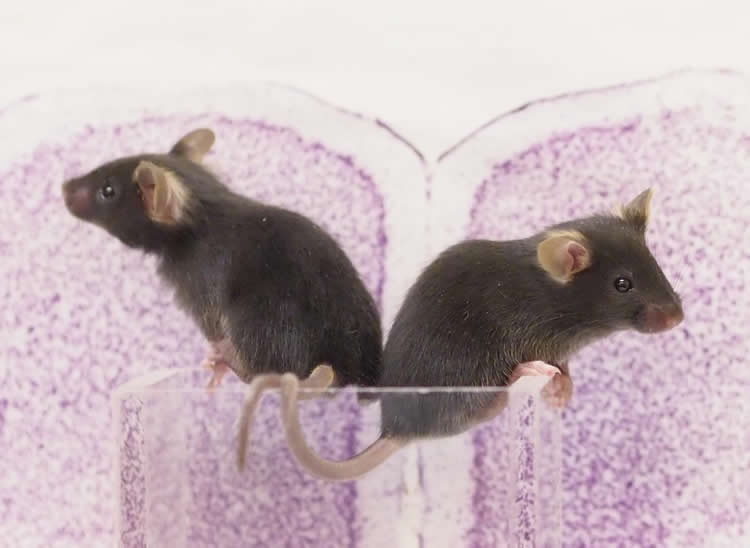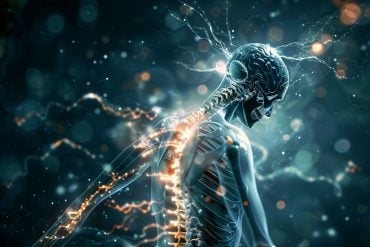Summary: A new study demonstrates changes in cortical neurotransmission due to hormones at puberty.
Source: UC Berkeley.
Brain study of mice has broad implications for the health and education of young girls.
A University of California, Berkeley, study of mice reveals, for the first time, how puberty hormones might impede some aspects of flexible youthful learning.
“We have found that the onset of puberty hits something like a ‘switch’ in the brain’s frontal cortex that can reduce flexibility in some forms of learning,” said study senior author Linda Wilbrecht, an associate professor of psychology and neuroscience at UC Berkeley.
While gleaned from young female mice, the findings, published in the June 1 issue of the journal Current Biology, may have broad educational and health implications for girls, many of whom are entering the first stage of puberty as young as age 7 and 8.
“Puberty onset is occurring earlier and earlier in girls in modern urban settings – driven by such factors as stress and the obesity epidemic – and has been associated with worse outcomes in terms of school and mental health,” said Wilbrecht, a researcher at the campus’s Center on the Developing Adolescent.
Wilbrecht and her laboratory team at UC Berkeley and UCSF discovered significant changes in neural communication in the frontal cortices of female mice after they were exposed to pubertal hormones. The changes occurred in a region of the frontal brain that is associated with learning, attention and behavioral regulation.
“To our knowledge, this study is the first to demonstrate changes in cortical neurotransmission due to hormones at puberty,” said study lead author David Piekarski, a post-doctoral researcher in Wilbrecht’s lab.
Overall, children have been found to have greater brain flexibility or “plasticity” than adults, enabling them to more easily master multiple languages and other elementary scholastic pursuits.
While they continue to learn after puberty, their cognitive focus in adolescence is often redirected to peer relationships and more social learning. If hormonal changes start as early as second or third grade, when children are tasked with learning basic skills, a shift in brain function could be problematic, Wilbrecht said.
“We should be more thoughtful about aligning what we know about biology and education to accommodate the fact that many girls’ brains are shifting to this adolescent phase earlier than expected,” she said.
For the study, researchers induced puberty in some young female mice by injecting them with pubertal hormones such as estradiol and progesterone, and blocked puberty in others by removing their ovaries.
In measuring the electrical activity of brain cells in the frontal cortices of post-pubertal mice, they observed significant changes in the synaptic activity thought to regulate brain plasticity.
They also compared the higher-order learning strategies of pre-pubertal and post-pubertal mice by testing their ability to find Cheerios hidden in bowls of wooden shavings scented with licorice, clove, thyme or lemon.
After each mouse figured out which scent was paired with the Cheerio, that pairing was changed so the mice had to use trial and error to adapt to the change and learn the new rule.

Overall, researchers found that the post-pubertal mice had a harder time adapting to the rule changes than their pre-pubertal counterparts.
“These data demonstrate that puberty itself, not just age, plays a role in frontal cortex maturation,” the study concluded.
The study notes that future studies on male mice will be needed to determine if the present results apply to the male brain.
Source: Yasmin Kirsten Anwar – UC Berkeley
Image Source: NeuroscienceNews.com image is credited to Jon Wilbrecht.
Original Research: Abstract for “Ovarian Hormones Organize the Maturation of Inhibitory Neurotransmission in the Frontal Cortex at Puberty Onset in Female Mice” by David J. Piekarski, Josiah R. Boivin, and Linda Wilbrecht in Current Biology. Published online June 1 2017 doi:10.1016/j.cub.2017.05.027
[cbtabs][cbtab title=”MLA”]UC Berkeley “Puberty Hormones Trigger Changes in Youthful Learning.” NeuroscienceNews. NeuroscienceNews, 2 June 2017.
<https://neurosciencenews.com/puberty-hormones-learning-6823/>.[/cbtab][cbtab title=”APA”]UC Berkeley (2017, June 2). Puberty Hormones Trigger Changes in Youthful Learning. NeuroscienceNew. Retrieved June 2, 2017 from https://neurosciencenews.com/puberty-hormones-learning-6823/[/cbtab][cbtab title=”Chicago”]UC Berkeley “Puberty Hormones Trigger Changes in Youthful Learning.” https://neurosciencenews.com/puberty-hormones-learning-6823/ (accessed June 2, 2017).[/cbtab][/cbtabs]
Abstract
Ovarian Hormones Organize the Maturation of Inhibitory Neurotransmission in the Frontal Cortex at Puberty Onset in Female Mice
Highlights
•Inhibitory neurotransmission increases in the frontal cortex after puberty
•Pre-pubertal, but not post-pubertal, gonadectomy blocks this increase
•Pre-pubertal hormone treatment accelerates maturation of tonic and phasic inhibition
•Hormone treatment, which drives early puberty, impacts behavioral flexibility
Summary
The frontal cortex matures late in development, showing dramatic changes after puberty onset, yet few experiments have directly tested the role of pubertal hormones in cortical maturation. One mechanism thought to play a primary role in regulating the maturation of the neocortex is an increase in inhibitory neurotransmission, which alters the balance of excitation and inhibition. We hypothesized that pubertal hormones could regulate maturation of the frontal cortex by this mechanism. Here, we report that manipulations of gonadal hormones do significantly alter the maturation of inhibitory neurotransmission in the cingulate region of the mouse medial frontal cortex, an associative region that matures during the pubertal transition and is implicated in decision making, learning, and psychopathology. We find that inhibitory neurotransmission, but not excitatory neurotransmission, increases onto cingulate pyramidal neurons during peri-pubertal development and that this increase can be blocked by pre-pubertal, but not post-pubertal, gonadectomy. We next used pre-pubertal hormone treatment to model early puberty onset, a phenomenon increasingly observed in girls living in developed nations. We find that pre-pubertal hormone treatment drives an early increase in inhibitory neurotransmission in the frontal cortex, but not the somatosensory cortex, suggesting that earlier puberty can advance cortical maturation in a regionally specific manner. Pre-pubertal hormone treatment also accelerates maturation of tonic inhibition and performance in a frontal-cortex-dependent reversal-learning task. These data provide rare evidence of enduring, organizational effects of ovarian hormones at puberty and provide a potential mechanism by which gonadal hormones could regulate the maturation of the associative neocortex.
“Ovarian Hormones Organize the Maturation of Inhibitory Neurotransmission in the Frontal Cortex at Puberty Onset in Female Mice” by David J. Piekarski, Josiah R. Boivin, and Linda Wilbrecht in Current Biology. Published online June 1 2017 doi:10.1016/j.cub.2017.05.027






